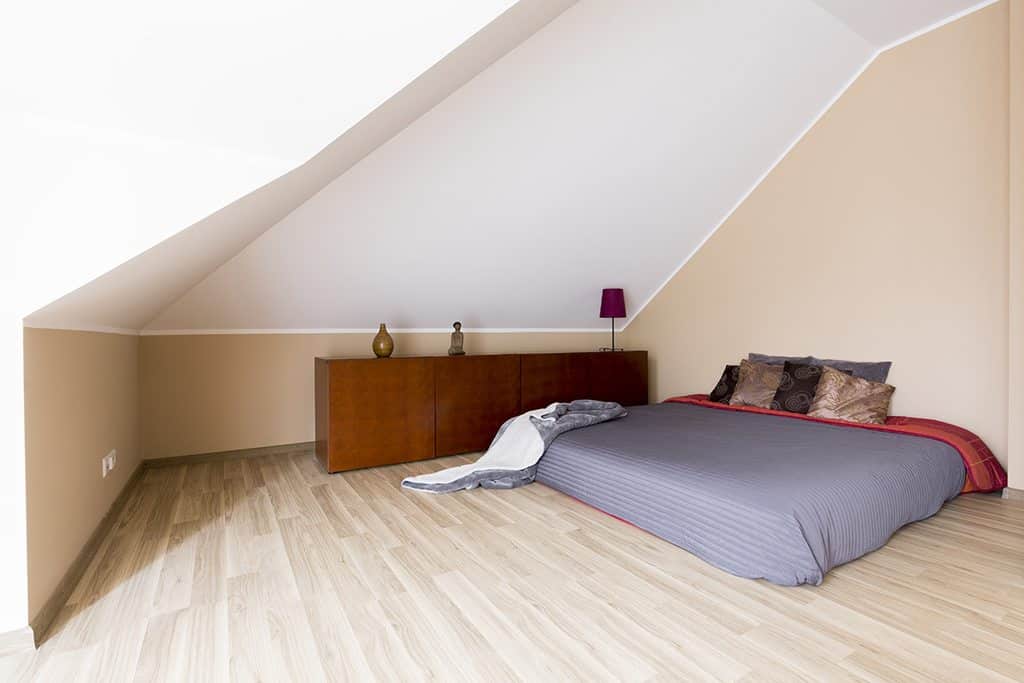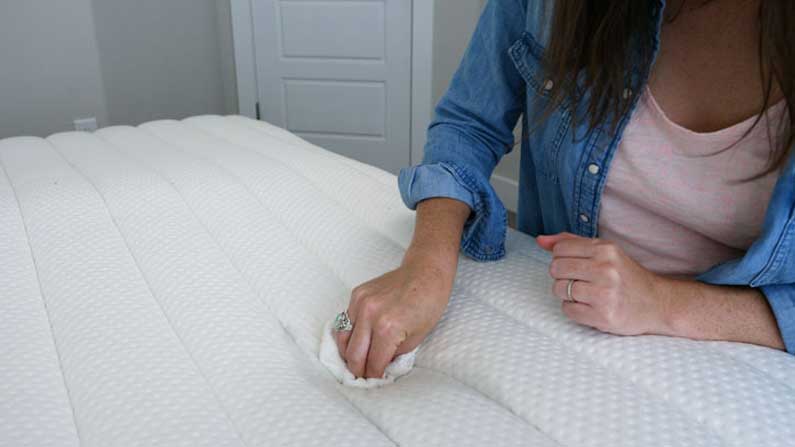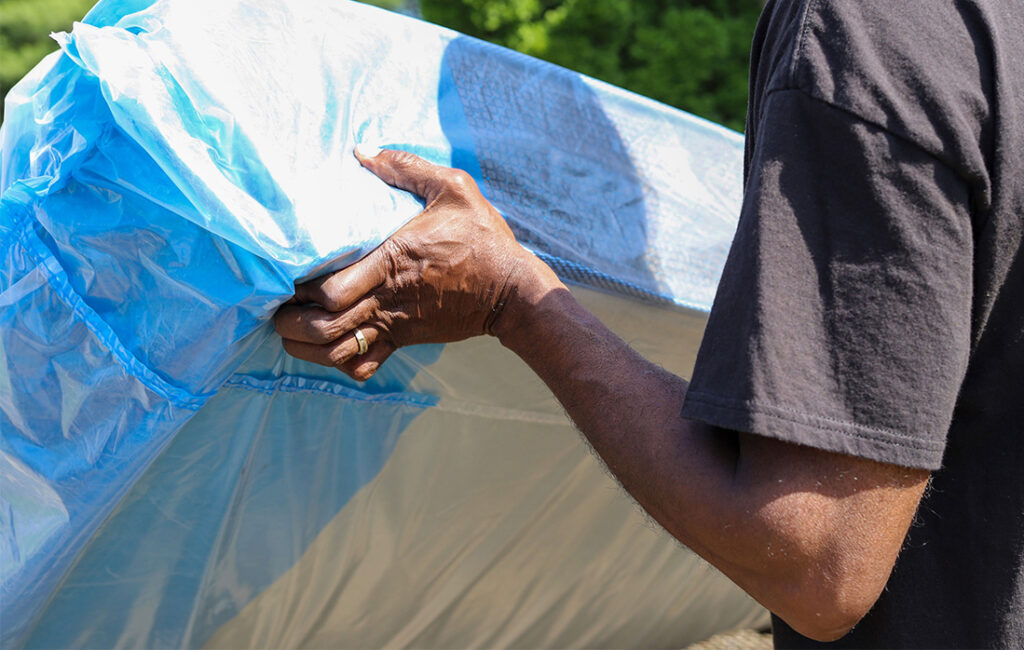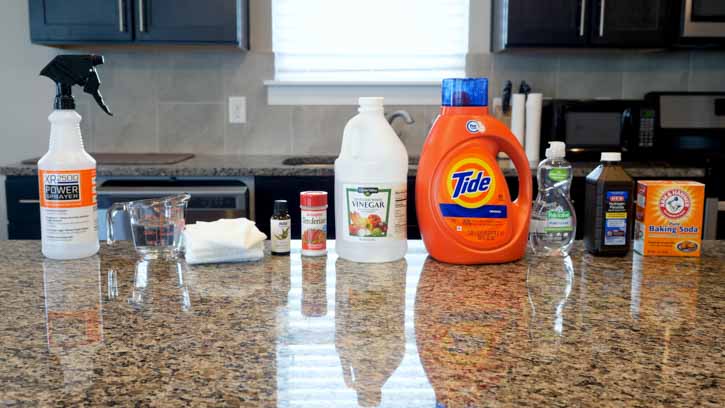At some point, you may find yourself needing to store a mattress. Whether you’re moving or renovating your home, properly storing your mattress is the best way to protect your investment.
Given the size and weight of the average mattress, especially queen sizes and larger, storing it can take some planning. Below, I’ve assembled a helpful guide to help you store your mattress until you’re ready to use it again.
Find a Place to Store the Mattress
First things first — decide where your mattress is going to live while it’s in storage. If possible, the easiest option is at home, in a spare bedroom, or a finished basement. The garage or attic can work as well, but a temperature-controlled part of your home is a better spot.

Some polymers, including those used in mattress foams, can expand and contract in response to big temperature swings, which could compromise the integrity of your mattress. To ensure your mattress feels the same as it did when you first stored it, it’s best to keep it in a temperature-regulated environment.
That’s especially true if you live in a humid climate, which increases the risk of mildew in the mattress. If your garage or unfinished basement has a tendency to get damp, you may want to consider using a dehumidifier near the mattress to keep the potential for mold and mildew to a minimum. You’ll also need to wrap your mattress properly (more on that below).
If you can’t store your mattress at home, a storage unit at a temperature-controlled facility is another idea. On the downside, fees can vary for this option and you’ll need a truck to get your mattress to and from the facility.
How to Store a Mattress: a Step-By-Step Guide
Once you’ve decided where to store your mattress, it’s important to prepare it properly. This involves cleaning it, covering it, and positioning it to maintain its integrity.
Clean the Mattress
This is a critical first step as you prepare your mattress for storage. Wrapping a dirty mattress can encourage bacterial and fungal growth, which can make for a funky-smelling mattress.
Start by stripping your mattress and vacuuming it thoroughly to remove dust and dust mites. Then, sprinkle the mattress with baking soda and use a soft upholstery brush to work it into the top of the mattress. Wait 10 minutes or longer, then vacuum the mattress again.
To deodorize and disinfect, use a 50:50 mixture of water and vinegar, which can be sprayed lightly on the mattress cover. If you’re dealing with stains, check out my tips for cleaning the mattress more thoroughly, and remember to plan ahead. It takes time for a mattress to dry, and it needs to be completely dry before you cover and store it.

Cover the Mattress
When it comes to wrapping your mattress, you can use plastic or a bag that’s designed for the job.
How to Use a Mattress Bag
You can find mattress bags, which are specifically made for storage and transporting, in stores and online. They function as a protective cover to keep your mattress clean and help prevent scratches, tears, and scuffs, and they come in standard mattress sizes. While it’s best to follow individual manufacturer directions, here’s what to expect in general.
- Start with an appropriate size. If you have a king-size mattress, for example, you’ll need a king-size mattress bag.
- Insert the mattress. Open the mattress bag and work it over your mattress, beginning at one end and moving to the other side. For bigger mattresses, it’s best to have help to avoid ripping the bag.
- Seal the bag. Once the mattress is fully inside the bag, seal it properly. Some bags may include an adhesive seal, while others need to be closed with packing tape.
How to Wrap a Mattress in Plastic
Plastic sheeting can also be used to wrap a mattress. Look for thinner, more breathable plastic sheets, which won’t trap moisture the way thicker plastic can.
- Gather your supplies. You’ll need packing tape and enough plastic to fully wrap around your mattress.
- Wrap your mattress. Depending on your mattress size, you’ll likely have to use multiple sheets of plastic. Begin by laying one or two plastic sheets on the ground and placing your mattress on top. Fold the plastic up and over the sides and top, using packing tape to seal the seams.
Transport the Mattress
Once your mattress is wrapped, it’s time to move it. While the plastic makes it easier to slide, avoid dragging the mattress if possible. Enlist a partner to help move the mattress to its new home. If you’re taking it to a storage facility, a covered truck is best.

If you have an innerspring mattress, avoid bending or folding it. Doing so can damage the coils inside, which will affect its comfort and support. Hybrid mattresses and all-foam mattresses are more flexible, so they can be folded for a short trip but shouldn’t be placed in storage that way.
Place in a Well-Ventilated Room
I’ve already covered the importance of storing your mattress in a temperature-controlled environment. Just as important is ventilation. A hot, stuffy, humid room can lead to mold and mildew in your mattress, even if you’ve wrapped it well.
Keep the Mattress Flat
Regardless of where you’ve chosen to store your mattress, it’s important that it lays flat and right side up. No mattress is designed to be stored upright, nor should you stack anything on top of it. If you aren’t storing your bed frame, you may want to lay an old blanket down before placing the mattress on the ground.
Check on the Mattress
During its time in storage, check in on the mattress occasionally to ensure it isn’t inadvertently getting wet or buried beneath other items. It should remain flat, with the right side up, while it’s being stored.
Clean the Mattress Before You Use it Again
If you cleaned your mattress properly before storing it, all you need to do when it’s time to use it again is remove the plastic and let it air out in the sunlight or a well-ventilated room. If you detect a stale odor, sprinkle it with baking soda and allow it to sit before vacuuming.

This is also a good time to inspect the mattress for any signs of damage. Bumps or divots in the top, mildew, or new stains are all signs that the mattress has likely been compromised. If cleaning thoroughly doesn’t do the trick, it may be time for a new mattress. There are many great options and deals for new mattresses, consider our experts choices on the best mattresses of 2025 to start your search on finding a sleep solution for you.
How to Store a Mattress Topper
You should store a mattress topper in a similar manner as a mattress, with a few key differences.
- Clean the topper. Start by cleaning and drying it completely to ensure that dirt and bacteria aren’t trapped.
- Roll the topper. Foam toppers can be rolled to prevent creasing and damage, but check the manufacturer’s directions if your topper has microcoils. In that case, you may need to store it flat. Avoid folding your topper, which can create cracks and indentations.
- Use a protective storage bag. A vacuum-sealed bag is best, but a fabric or plastic storage bag will work as well. Make sure it’s sealed completely.
- Store it properly. Like a mattress, it’s best to keep your topper in a climate-controlled environment. A closet works well, but be mindful of storing your topper away from damp or humid spaces, like the basement or attic.
FAQs
Should a mattress be stored flat or upright?
Mattresses should always be stored flat to maintain their integrity. While some innerspring mattresses can be stored upright for very short periods of time, the best bet is to lay a mattress flat when it’s being stored.
Should you roll a mattress for storage?
No. While many mattresses are rolled and shipped when you buy them from the manufacturer, they aren’t designed to be rolled again for storage. Instead, it’s important to lay a mattress flat while it’s being stored.
How do you keep a mattress from molding in storage?
Cleaning and thoroughly drying a mattress before wrapping it properly in a storage bag is the best way to minimize molding. Make sure to store the mattress in a temperature-controlled environment. Avoid places that are damp and humid, like unfinished basements, attics, and garages. If you have no other option, consider using a dehumidifier near your mattress and make a point of checking it regularly to ensure it isn’t beginning to mold.
Can you move a mattress on top of a car?
You can, but it’s not the best option. Ideally, you should use a covered truck or even a moving van, which will allow you to keep the mattress flat instead of bending it or warping it with tie-down straps.


